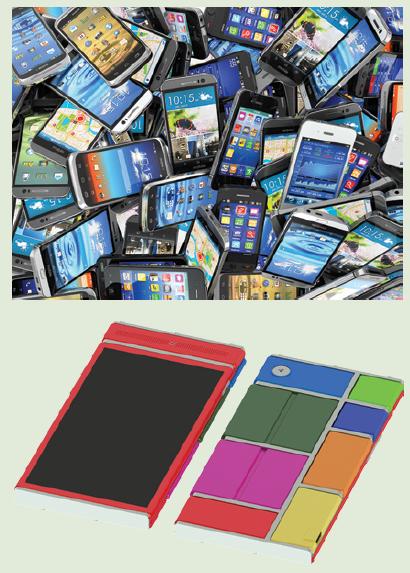For many consumers, the release of new versions of popular mobile phones produces stifled yawns rather than
Question:
For many consumers, the release of new versions of popular mobile phones produces stifled yawns rather than genuine excitement. Slightly better cameras, slightly bigger screens, faster processers and extra security features are not the kind of innovations that drove consumers from established companies such as Nokia and Motorola into the arms of innovators such as Apple and Samsung. Major advances in smartphones seem to be coming from innovators creating modular devices, such as PuzzlePhone and Phonebloks. These designers are attempting to build a more sustainable product by creating products with interchangeable modules that could be upgraded, repaired or customised. This means that instead of upgrading your mobile phone every 18 months (the lifespan of the average smartphone), you could change modules of the phone on a more regular basis.
Designed in Finland, the PuzzlePhone is made up of the easy‐to‐change modules of the spine (display), brain (CPU, memory, cameras) and heart (battery). As of 2015, versions of the phone are available for pre‐order, with products expected to be shipped in late 2016.
Phonebloks is an organisation which tries to inspire and connect companies that are developing aspects of modular devices. Googlesponsored project has already produced operational prototypes such as the Spiral 3, which is now being developed for the market. Project Ara aims to develop an open hardware platform for modular smartphones, thus lowering the entry barrier for phone manufacturers and, in turn, potentially lowering costs for the consumer.
The need to move towards more sustainable mobile phones is also driven by the need to reduce toxic e‐waste. Another driving force for new phone design is to reduce the demand for the rare earth materials used in mobile phones. These materials are sometimes acquired from conflict zones, similar to the processes involved in obtaining ‘blood diamonds’. An effect of the demand for these materials can also be seen by visitors to Sydney’s Taronga Zoo or Melbourne Zoo, who are being called to save the gorilla habitat in the Democratic Republic of Congo by recycling their phones. The gorilla habitat is being reduced as land is cleared to mine for the metal coltan, which is used in mobile phones and other electronic products.
The push to develop and sell modular phones is likely to increase and eventually expand to other electronic products, such as computers, tablets and digital televisions. Sustainable products are the way of the future and businesses that innovate in this direction will have a better chance of being sustainable themselves.
QUESTION
Do you believe that a technology company such as PuzzlePhone can truly produce products that are sustainable and use production processes that are sustainable, or is the company just using sustainability as a marketing ploy?
Step by Step Answer:

Management
ISBN: 9780730329534
6th Asia Pacific Edition
Authors: Schermerhorn, John, Davidson, Paul, Factor, Aharon, Woods, Peter, Simon, Alan, McBarron, Ellen





